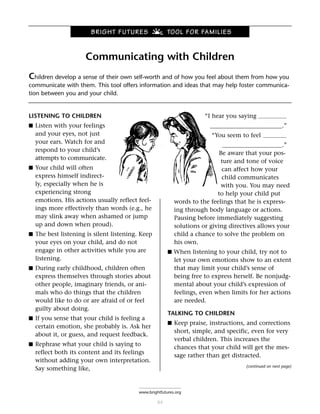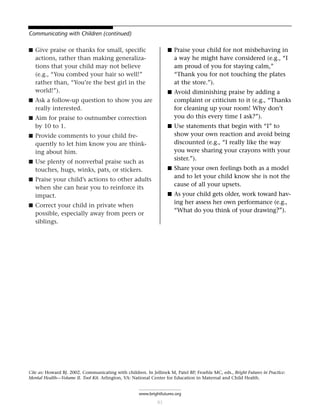This document provides guidance on effective communication between parents and children. It emphasizes listening without judgment, praising specific positive behaviors, and using short, simple statements. Parents should listen for feelings beneath words, rephrase to show understanding, and avoid criticism. Praise should far outweigh corrections to build a child's self-worth and sense of how they are valued.

